The chance to work remotely has opened up options for many Australians in the last 18 months. But for Fiona Kotvojs it was 2005, when satellite internet first came to the NSW South Coast, that changed her career direction.
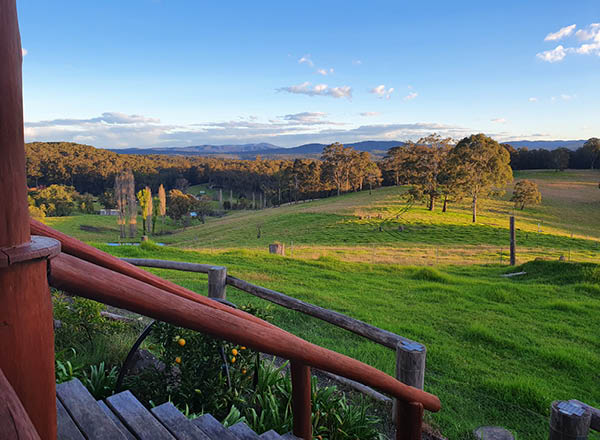
The internet coverage meant she was able to return home to the 380 acre property she’d grown up on.
“My parents fell in love with it and bought it on their honeymoon in 1961,” says Fiona, of the Dignams Creek property, south of which is ringed by National Park and watched over by the dome of Gulaga Mountain.
Back in those days, the site was completely overgrown – the oak and hazel trees which play a key role in the South Coast’s first truffery were still a long way off.
“When they bought the place Dad did huge amounts of work getting the farm clean and rid of all the blackberries and weeds,” she says.
Martin, now 92, still works on the 380 acre property every day. “He does everything from weeding to fencing to sawing fallen trees,” says Fiona.
Truffles in NSW South Coast
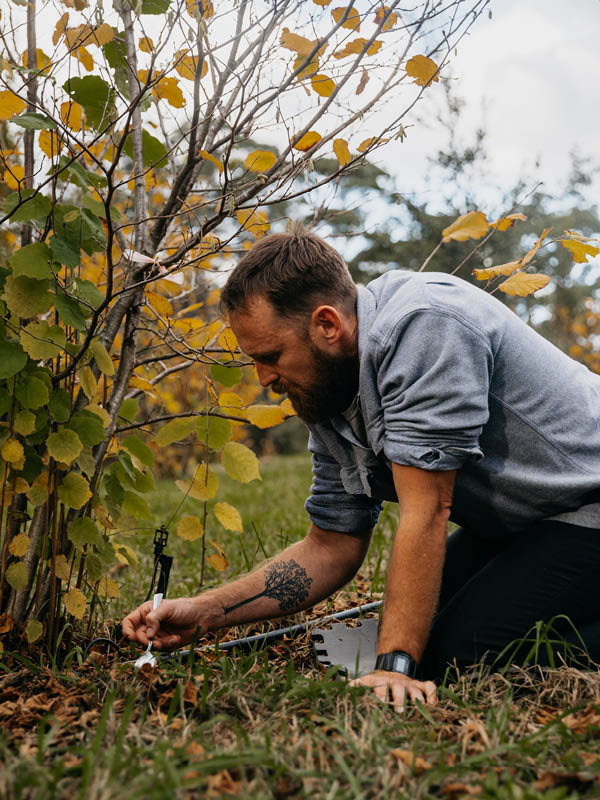
In those early days a property of this size was viable as a small farm. But by the time Fiona and her husband Alan moved back, it was much harder to keep a small property solvent. She needed a way to help the family stay on the land they loved.
The solution came after a series of brainstorms that ran to four A4 pages.
“Ultimately we eliminated most of the ideas, but truffles looked like it could be a good option,” says Fiona.
Fiona organised for a group of experts from Victoria to come and run a workshop for local farmers who were interested in truffle production.
It was inspiring, although regardless of the location, growing truffles isn’t a simple affair.
“It’s like a black box: it’s very much a mystery,” she says.
Like wine, truffles have a strong sense of terroir. They’re also fussy: to ripen they need very specific conditions.
“They have to have frost at least six times a year. They also need to have sunlight, so they need to face the north. That means that in winter you’ve got to get frost at night but plenty of sun on the ground during the days because the truffle needs a frost to ripen it,” says Fiona.
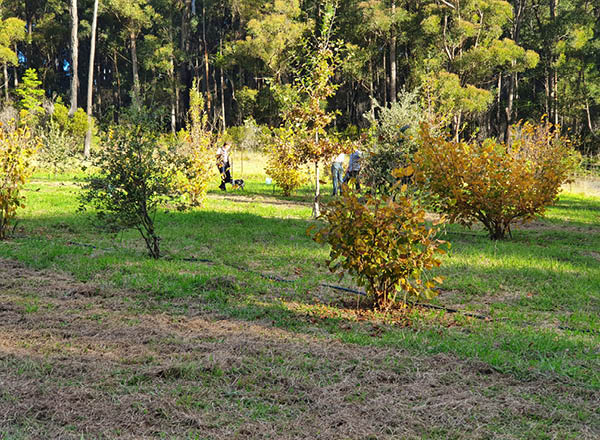
“There’s also the limitation that growing truffles within about 40 metres of existing trees, or on land that has had trees in the last twenty years is risky. In either situation, there will be mycorrhiza in the soil that will compete with the truffles,” says Fiona.
When the team at Gulaga Gold started planting in 2013, the family didn’t know what type of trees would work best in the Eurobodalla.
“We used three different types of trees (two types of oak and a hazelnut) so that we could find out what work,” Fiona says. “We buy seedlings that have had their roots dipped in spores that, once they grow, can eventually produce truffles,” says Fiona.
You can find more local producers in the Eurobodalla Food Trail brochure and online.
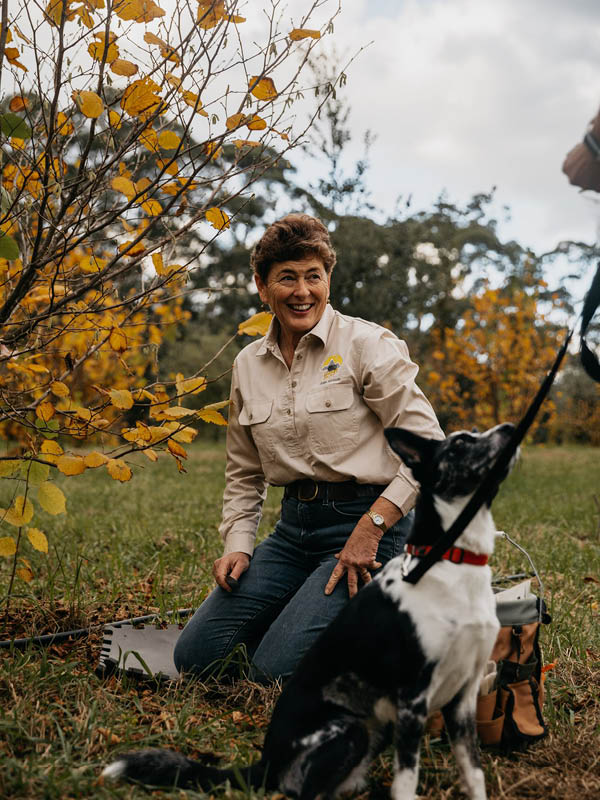
Over the years they have experimented with different spacing between each tree, varied their watering and mowing regimes, and dug Spanish wells (a type of trench), all in an effort to boost growing conditions.
It took five years to get their first black truffle harvest, earlier than the expected eight. Now the understanding of the nuanced conditions for truffles has improved, Fiona expects other plantings will mature more rapidly.
The learning process is something Fiona enjoys explaining to guests on their winter Truffle hunts.
Gulaga Gold uses dogs rather than pigs to hunt out their truffles, a skill any dog has potential to do, once properly trained.
“Dogs can scent a truffle from many meters away that we can only smell with our nose to the soil,” Fiona says.
Fiona’s family have chosen to train (and pay) local dogs for their skills, rather than having their own dogs for the role. Contrary to what most people believe, the dogs aren’t motivated by the truffle itself (unlike most adults, dogs don’t actually like eating truffles). Instead, they enjoy the fun of the hunt, and (mostly) the treats they get when after a successful discovery.
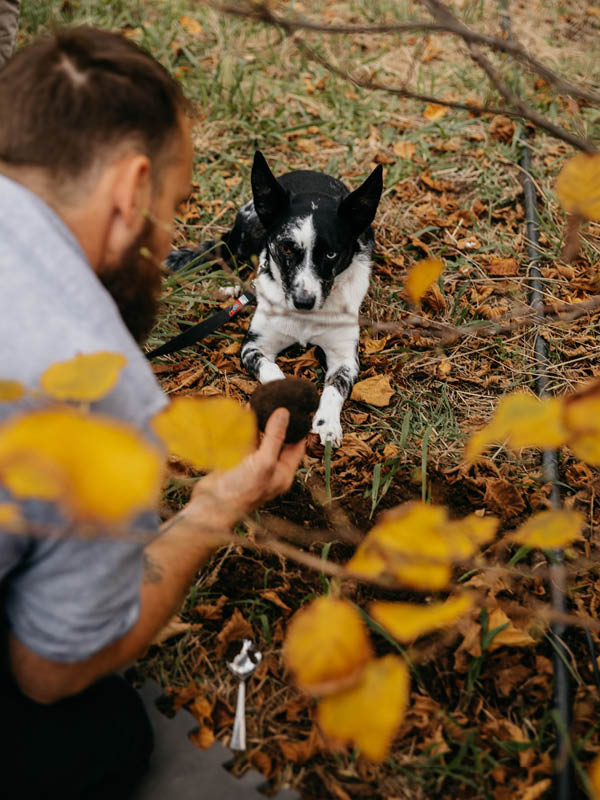
“Guests can come with us out on the hunt. We follow the dog, and if they find something we kneel down and smell the soil to see if we can smell the truffle and determine if it’s ripe. If it’s not, we don’t disturb it – because disturbing it will stop ripening and it starts to rot.”
Afterwards of course is the truffle tasting, including a comparison between real truffle oil and the “fake stuff”:
“Once you taste real truffle oil, you will never go back,” says Fiona.
Despite the work involved establishing and maintaining a truffery (mowing, watering and pruning), Fiona readily admits that life as a truffle farmer offers a couple of distinct advantages over an activity like dairy or beef farming.
“I think truffles are easier than cattle. Cows invariably calve on horrible weather nights at two o’clock in the morning, so you’re out there at all hours,” she laughs, “Truffles just sit, hidden in the soil, waiting to be found.”
Discover more Eurobodalla producers in the Eurobodalla Food Trail.
